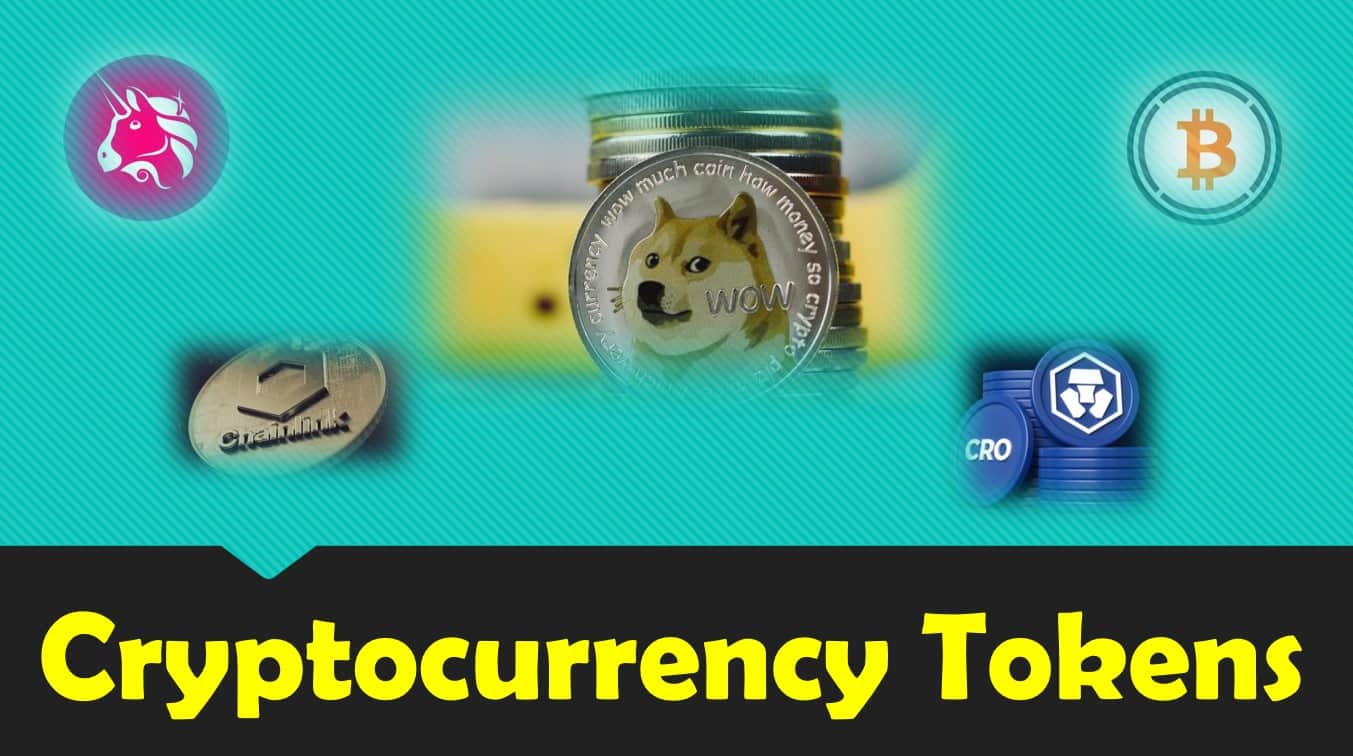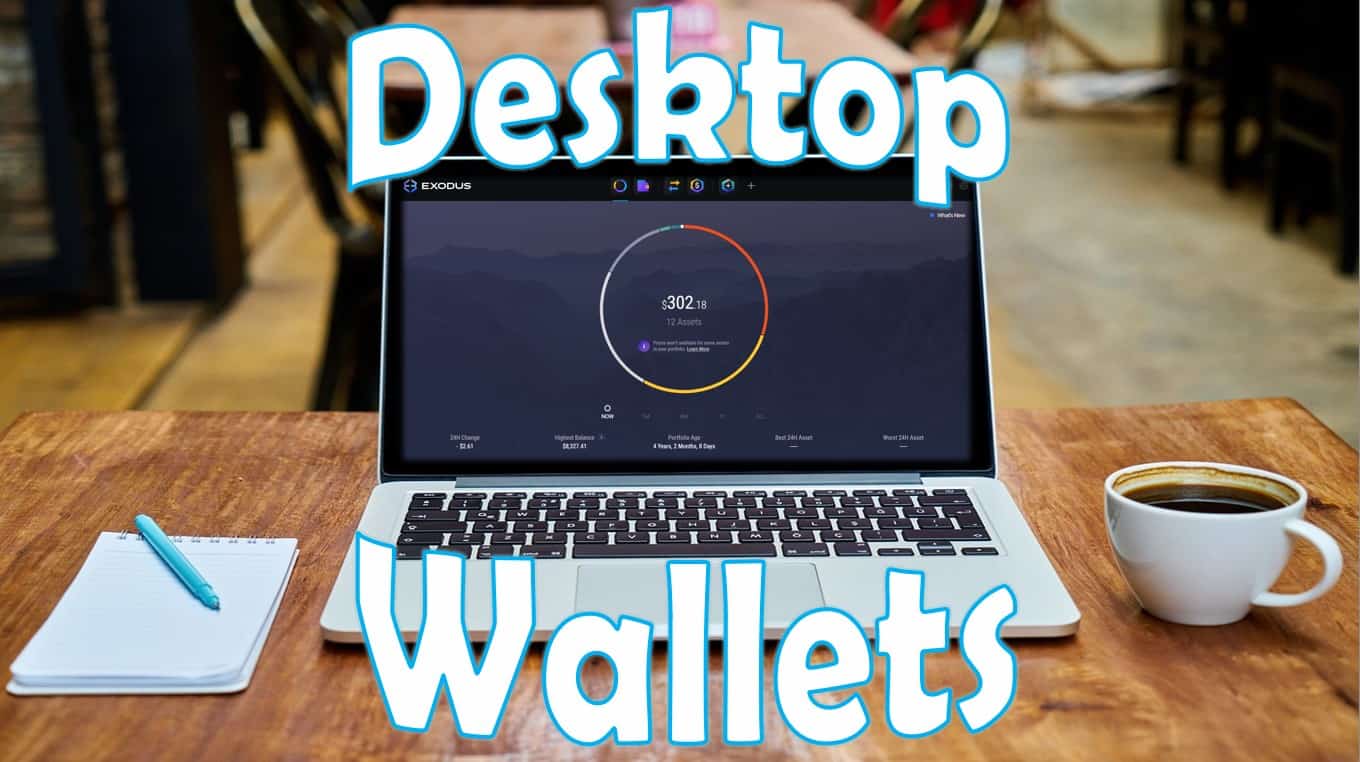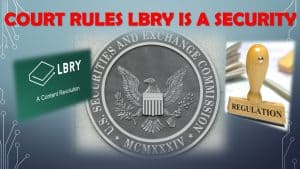
Cryptocurrency: What Are Tokens?
Last updated on June 8th, 2023 at 03:12 pm
There are many terms in the cryptocurrency space that are often used interchangeably, even though they actually have different meanings. The word token is one of those terms. Many people in this space, including me, have used the words coins and tokens as though they were synonymous even though they are not.
A cryptocurrency token is a digital representation of something in a particular ecosystem. There are 5 types of crypto tokens, platform tokens, security tokens, transactional tokens, utility tokens and governance tokens. Each of these types of tokens exist on another coin’s blockchain.
Having a better understanding of the different types of tokens is helpful before a decision can be made to invest money. Read on as I break it all down.
Table of Contents
What Are Tokens?
Even though there are different types of tokens, all with differing functionality and purpose, tokens generally start out with some similar characteristics.
These similarities include, tokens exist on another coin’s blockchain and they are a representation of something within a specific cryptocurrency ecosystem or platform.
You might be wondering at this point what I mean when I say that “it exists on another coin’s blockchain.”
If that’s the case, you can head over here and review my breakdown of what a coin is.
A token’s representation on a blockchain can be just about anything. It could represent actual monetary value, a tokenized asset (such as real estate) or even a vote within a designated ecosystem.
Let’s review the different types of tokens that exist, and their different functions.
Top 10 Tokens by Marketcap*
*Excludes Stablecoins
Types of Tokens
As of this writing, there are 5 different types of cryptocurrency tokens that exist. These are platform tokens, security tokens, transactional tokens, utility tokens and governance tokens.
These tokens can be broken down further, into 3 groups.
These groups are security tokens, transactional tokens and utility tokens.
Platform tokens and governance tokens can be grouped under utility tokens as that is one of the utilities that they provide to their respective platforms.
Security Tokens
For many hardcore believers in the cryptocurrency space, the idea that a token could be considered a security is blasphemous.
However, there are legitimate arguments to be made regarding this, and it is certainly something that is developing, in real time, between regulators and token creators.
Security tokens are cryptocurrencies that are considered a form of investment where a profit is expected. Security tokens attempt to live within the existing regulatory framework for securities as outlined by the SEC. These tokens function like stocks, and protect against loss with standardized ownership of an underlying asset.
Disclaimer
Before we proceed any further about security tokens, it must be said again that this is NOT financial or investment advice. You should contact a licensed professional in your jurisdiction before making any investment decisions.
In a nutshell, when you purchase a security token, you are purchasing digital ownership of a physical asset. This can be all, or a portion of a physical asset.
An example of this would be Pax Gold (PAXG). This token is pegged to the price of gold, and there is a physical gold reserve being held matching the amount of PAXG purchased.
When I first started talking about security tokens a moment ago, I mentioned that there is controversy about which tokens are actually considered securities by regulators.
This controversy is because back in 2017 many projects in our space, some legit and some straight out scams, began to source for funding using something called an Initial Coin Offering (ICO).
ICOs became all the rage and many people lost lots of money. These ICOs skirted the regulatory framework for standard securities, and provided the average retail investor with the ability to “get in on the ground floor.”
After multiple scams, an increasing number of complaints flowed in to regulators from the investors who had been scammed. This caused the crypto space to pivot and the Initial Exchange Offerings (IEO) was born.
IEOs were meant to put the burden of vetting a project who was looking to raise money for development onto the exchange that listed it. Unfortunately, this met with limited success as many exchanges either didn’t bother to vet the project or just became complicit in the scam.
You can read more about the history and evolution of token sales in the space. I provided a more detailed breakdown of ICOs and IEOs.
This has ultimately brought us to our current situation with security tokens.
If you are interested in doing more research on the security tokens currently available to invest in, you can find them listed on STO Market. These are the projects who are attempting to follow regulations set forth by regulators.

The Securities & Exchange Commission (SEC) is currently in the process of determining which tokens they consider to be securities.
This is playing out in the form of lawsuits making their way through federal courts. Probably the most famous is Ripple, the company behind XRP, vs the SEC.
The SEC also took legal action against LBRY Credits (LBC) alleging that there are actually a security. The SEC won this ruling against LBRY.
Many cryptocurrency proponents have alleged that these legal actions by the SEC are in retaliation for the developing innovation which can ultimately remove people from the current financial systems. Others see this as the government’s means of stifling and censoring the entire industry.
Regardless of the reasons, the SEC uses a test, developed in 1933 called the Howey Test, to determine if something is a security.
Many also argue the veracity of using a century old test against a brand new asset class. They believe a newer set of criteria should be utilized that is more respective of current technology.
Transactional Tokens
This is another one of those, the name is the description of things. These types of tokens help to facilitate transactions. This is generally accomplished by the token functioning as a currency.
These transactions can be swapping cryptos on an exchange as well as paying for other goods and services, like you can do with Bitcoin.
The largest group of tokens in this category are stablecoins.
And this is why things get confusing. The name ‘Stablecoin’ implies that it is actually a coin.
However, this is incorrect.
Stablecoins are tokens because they exist on another coin’s blockchain.
Stablecoins are tokens which are pegged in price to another asset.
For most stablecoins that asset is the U.S. dollar. However, some are pegged to other fiat currencies like the EURO, and others to commodities like gold.
For example, Tether (USDT), is a native token to the Ethereum (ETH) blockchain. Originally, this was the only place to get access to USDT. Now, you can access it on other blockchains such as Solana (SOL) and Polygon (MATIC).
If you’re looking to dive deeper into stablecoins, you can do that here.
Utility Tokens
Utility tokens are tokens that are programmed to provide a specific type of action within a specific ecosystem.
As I mentioned, these tokens often only operate on one platform, however they can be programmed to provide more than one function on that platform.
A utility token generally provides you access to a platform or service.
Think of it like buying a license to access software. Once you have paid you get a key (token) that provides you access. However, this means you can use the software, but you don’t own the actual software.
Utility tokens are generally fungible. This means that they can be exchanged for other tokens or coins on a cryptocurrency exchange.
Platform Tokens
A platform token is just like the name suggests, a token designed to operate on a specific platform.
These tokens provide specific functionality with the ecosystem of that platform and are basically worthless outside of that purpose.
A growing group within this type of token are fan tokens.
These are tokens created by groups, like sports teams. They can use these tokens to incentivize fans to purchase merchandise or even incentivize players to join the team.
One such example of this is when Paris Saint-German (PSG) created their own fan token and gave it to Lionel Messi as part of his welcome package.
Platform tokens can also be used within a particular platform to provide various levels of access as well as providing the holder with the ability to help govern the platform.
While these functions are not always encoded into a platform token, they can certainly be programmed for these functions.
Governance Tokens
Governance tokens are primarily found in the DeFi (Decentralized Finance) area of the crypto space. These tokens give holders a say in a particular project or platform. This usually happens in the form of voting rights.
These voting rights are outlined prior to issuance of the tokens. Each project can decide how much power the token holders can exert over the platform and its future.
The way governance tokens are issued varies greatly. However, generally speaking, governance tokens are not initially made available to anyone outside of the project before a governance outline and project treasury are created.
Through the use of governance tokens, projects are able to form a Decentralized Autonomous Organization (DAO).
The DAO helps guide the future of the project or platform via voting on items presented to the DAO. Some of the items voted on can include everything from fee assessments, the allocation of treasury funds to grow the project and even the control over future issuance of more governance tokens.
Can Tokens Become Coins?
If a token finds itself getting too big to function properly on the blockchain it’s been built on, a token can be transitioned to a coin.
Transitioning from a token to a coin is a long process. This is primarily because an entirely new blockchain must be created and tested before the transition can take place.
Once the blockchain and its native coin have been created, the holders of the original token will be allowed to exchange their ‘old’ tokens for the new coins. This exchange happens on something called a crypto bridge.
A crypto or blockchain bridge allows one coin or token to operate on the blockchain of another coin, as a token. Get a better understanding of a crypto bridge in the video I have placed within this section.
The two of the most popular examples of this are Binance (BNB) and Tron (TRX).
Both of these projects began on the Ethereum (ETH) blockchain.
These projects grew beyond the constraints of the Ethereum blockchain, so they created and migrated to their respective blockchain. Once that happened BNB and TRX, as we know it today, were born.
Can Tokens Exist on Multiple Chains?
To increase interoperability and transaction throughput within the cryptocurrency space, crypto bridges, like the ones I just mentioned, have been created to allow for coins and tokens to be available on different blockchains.
However, there are some caveats to this that you should understand.
First, the actual asset technically does not exist on other blockchains. It is actually a representation of the asset.
For example, Bitcoin (BTC) itself can’t exist on the Ethereum blockchain. However, you can get a token called Wrapped Bitcoin (WBTC) on the Ethereum blockchain. It is a representation of BTC which can be used like BTC, and is pegged to the price of BTC.
Second, when you are moving an asset from one blockchain to another, the original asset is either locked on the bridge when the new asset is issued, or it is burned on the original blockchain.
This prevents double spending of funds.
Finally, crypto bridges are not as secure as the blockchains they are connected to. They have been hacked for the funds that are locked into them via smart contract.
Also, some bridges are created and operated by groups or individuals. This requires that users have trust in the operators of these bridges.
Token Round-Up
Cryptocurrency tokens are representations which operate on top of another coin’s blockchain.
There are five types of tokens. These are platform tokens, security tokens, transactional tokens, utility tokens and governance tokens.
If need be, a token can be converted into a coin and be supported on its own blockchain. However, this is a very long process.
Once that process is complete, the original owners of the token can convert their holdings to the newly created coin by using a crypto bridge.
A crypto bridge can also be used to access one blockchain asset on a different blockchain.
Crypto bridges are not as secure as the blockchains that they are connected to. There have been several hacks of smart contract bridges.
Understanding the differences between various cryptocurrency assets is important before considering any type of investment. Review the entire group of crypto assets here.
Disclaimer
The information provided here is for INFORMATIONAL & EDUCATIONAL PURPOSES ONLY!
View our complete disclaimer on our Disclaimer Page








